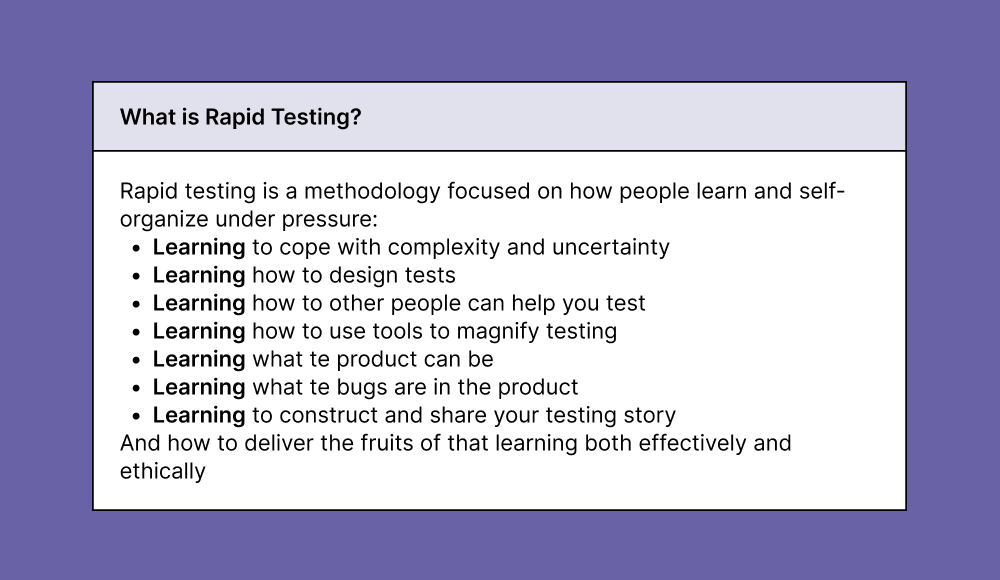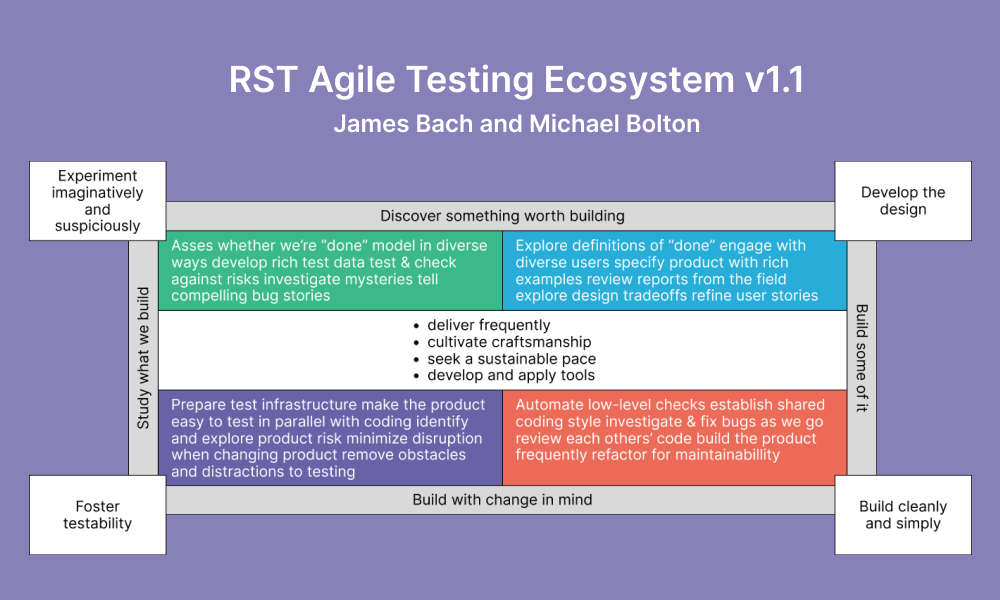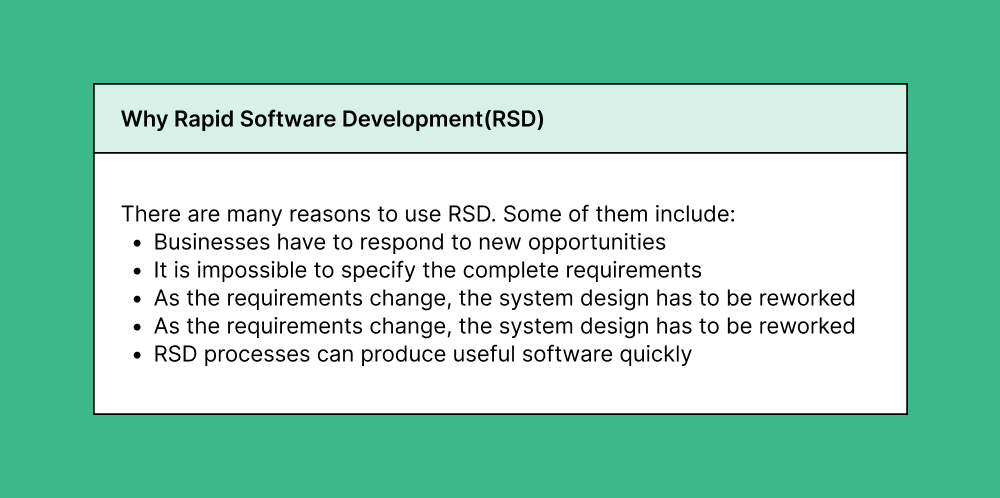What is rapid software testing and how can I implement it?
There’s more to software testing than test cases. In this article, we’ll explore Rapid Software Testing (RST) – a revolutionary approach that helps to add robustness to a QA process and complement test case execution. It does this by harnessing the skills of software testers and giving them the responsibility of finding bugs rather than giving them lists of tests to conduct again and again.
Curious about how Rapid Software Testing can help you? Find out more below.
We can help you drive localization as a key initiative aligned to your business goals
What is rapid software testing?
Rapid Software Testing is a context-driven, exploratory testing methodology emphasizing adaptability, critical thinking, and efficient testing practices. Michael Bolton and James Bach created RST to handle the challenges of modern software development and provide a flexible and responsive framework for testing.

5 Fundamental principles of RST
- Critical thinking: RST places a high value on the critical thinking abilities of testers. It encourages them to actively engage with the software, assess risks, and make informed testing decisions.
- Heuristics and oracles: Testers use them to guide their testing efforts. These provide guidelines and criteria for effective decision-making during testing.
- Exploratory testing: A cornerstone of RST, exploratory testing involves simultaneous test design and execution. Testers dynamically adapt their approach as they learn about the software during testing sessions.
- Session-based test management: RST introduces Session-Based Test Management to structure and manage exploratory testing. Testers organize their work into focused sessions with specific goals and timeframes.
- Risk-based testing: RST prioritizes testing efforts based on the criticality and likelihood of defects in different software areas, ensuring a targeted and efficient testing approach.
%20(1).png?width=1000&height=535&name=Frame%2060%20(1)%20(1).png)
| Principle | Description |
| Take Control of Your Work |
- Avoid blind adherence to instructions. - Independently decide on testing practices and coordination methods. - Do not base testing on incomprehensible test cases; seek understanding or communicate the need for clarification. |
| Eliminate Unproductive Activities |
- Identify and cease activities not contributing significantly. - Follow the golden rule: discontinue activities that feel like waste of time. |
|
Embrace Exploration |
- Actively engage with the product for swift learning. - Move beyond spec reading or reusing old test cases. Build a comprehensive mental model quickly through interaction. |
| Focus on Product Risk | Acknowledge different testing approaches for varying scenarios. - Allocate more in-depth testing to areas with higher potential product risk. - Perform shallower or no testing where the risk is low. |
| Utilize Lightweight, Flexible Heuristics |
-RST Methodology provides concise, adaptable heuristics models. - Maintain control over these models for guidance in testing at different levels. |
| Minimize Documentation Overhead |
- Avoid extensive documentation or choose the lightest form communicating necessary information effectively. |
|
Leverage Tools for |
- Testers may not need to code but require powerful tools, including automated cheking, to expedite testing processes. - Create or enlist tools enhancing efficiency and accuracy in testing activities. |
| Articulate Testing Value Clearly |
- Clearly and quickly communicate the significance of testing. - Emphasize the value to clients and team member. - Align testing efforts with project goal to demonstrate that time is well spent. |
| Continuous Skill Growth |
- No instant solution; continuous skill development is essential. - Cultivate judgment and a broad knowledge base. - Explore different techniques, tools and processes to tailor a fast yet comprehensive testing approach aligned with business needs. |
Significance of RST in agile development
Alignment with agile principles
Rapid Software Testing seamlessly aligns with the core principles of Agile development.
Its adaptability, iterative nature, and focus on collaboration make it an ideal fit for Agile teams working in short development cycles.
Integration with agile workflows
Traditional testing methodologies can become bottlenecks in Agile development, where changes are frequent and rapid. RST, with its emphasis on exploratory testing, embraces change and provides a responsive testing approach that complements the iterative nature of Agile workflows.
Collaboration and communication
RST fosters open communication and collaboration between team members, promoting a shared understanding of project goals and risks. This collaboration is essential in Agile environments where cross-functional teams work closely to deliver software incrementally.

Comprehensive step-by-step guide to implementing rapid software testing in your organization
Implementing Rapid Software Testing (RST) is a strategic initiative that requires careful planning and execution. This guide provides insights on how to integrate RST into your organization, including creating a test strategy, setting up a test environment, and defining test objectives and scope.
Step 1: Understand the context
1. Assess project needs – Evaluate the nature of your software development projects, considering project size, complexity, and methodology.
2. Gain Stakeholder Buy-In – Communicate the benefits of RST to key stakeholders, including project managers, developers, and product owners. Secure their support and alignment with the goals of RST.
Step 2: Establish a test strategy
1. Define testing objectives – Work collaboratively with stakeholders to define testing goals clearly. Consider aspects such as functionality, performance, and security.
2. Identify key risks – Perform a comprehensive risk assessment to recognize any potential hazards linked with the software. Then, prioritize the risks based on their likelihood and impact.
3. Select appropriate techniques – Choose testing techniques aligned with RST principles, such as exploratory, risk-based, and session-based test management. Tailor these techniques to fit the unique characteristics of your projects.
Step 3: Set up a test environment
1. Plan your infrastructure – Assess and plan the necessary infrastructure for your test environment, ensuring it closely mirrors the production environment. Consider hardware, software, and network requirements.
2. Select tools – Choose testing tools that support RST principles, including exploratory testing, test automation, and session-based test management tools. Ensure compatibility with the development ecosystem.
3. Environment Configuration – Configure the test environment to reflect various scenarios, ensuring it is easily reproducible. This is essential for effective exploratory testing and comprehensive coverage.
Step 4: Define test objectives and scope
1. Define scope – Clearly define the scope of testing by identifying features, functionalities, and components to be tested. Consider both functional and non-functional requirements.
2. Implement session based test management (SBTM) – Implement SBTM to structure testing activities into focused sessions with specific goals. Define charters for each session to guide testers effectively.
3. Document test objectives – Create a comprehensive document outlining test objectives, scope, and criteria for completion. This document will be a reference point for all stakeholders throughout the testing process.
Step 5: Implement rapid software testing
1. Offer training and skill development – Provide training sessions on RST principles, techniques, and tools for testing teams. Focus on developing critical thinking skills and adaptability.
2. Drive collaboration and communication – Promote open communication and collaboration among testing teams, developers, and stakeholders for a shared understanding of project goals and risks.
3. Initiate exploratory testing – Begin the exploratory testing process, allowing testers to dynamically design and execute tests while actively learning about the software. Encourage testers to adapt their approach based on real-time insights.
Step 6: Continuous improvement
1. Conduct regular feedback sessions and retrospectives to gather insights from testing activities. Use feedback to identify areas for improvement and implement changes iteratively.
2. Implement changes in project requirements and adapt testing strategies accordingly. RST's flexibility is a key asset in dynamic development environments.
3. Document significant findings, insights, and decisions. Encourage knowledge sharing within the team to enhance collective learning. Regularly update documentation based on evolving project requirements.
The benefits of adopting rapid software testing in your development process
Adopting Rapid Software Testing (RST) in your development process can provide different benefits, impacting various aspects of the software development lifecycle.Here are some key advantages:
1. Faster time-to-market
RST's emphasis on exploratory testing allows testers to quickly adapt and respond to changing project requirements. This adaptability results in faster identification and resolution of issues, reducing time spent on rigid test case execution.
Rapid identification of defects through exploratory testing contributes to faster bug resolution, accelerating the overall development process and shortening the time it takes to deliver a product to market.
2. Improved product quality
RST promotes a continuous feedback loop between development and testing. Testers actively engage with the software, providing immediate insights into its quality. This iterative approach leads to the early identification and resolution of quality issues.
Also, the exploratory nature of RST ensures that predefined test cases do not constrain testing efforts. Testers actively explore different scenarios, leading to improved test coverage and a more thorough assessment of the software's functionality.

3. Increased customer satisfaction
By actively exploring the software and uncovering defects early in the development process, RST contributes to creating more reliable and stable products. This, in turn, enhances customer satisfaction by delivering software with fewer issues.
RST's adaptability aligns well with Agile principles, enabling quick response to changing user needs. The ability to incorporate user feedback in real-time ensures that the final product better meets customer expectations.
4. Cost savings in the long run
Detecting and addressing defects early in the development process is more cost-effective than dealing with issues later in the software lifecycle. Session-Based Test Management (SBTM) helps optimize testing resources by structuring testing activities into focused sessions. This ensures testing efforts are directed towards areas of higher risk and significance, preventing unnecessary testing overhead.
5. Adaptability to changing requirements
RST's adaptability allows testing efforts to flexibly align with changing project requirements, particularly in Agile environments where iterative development and frequent changes are the norm. Testers can quickly design and execute tests to ensure new functionalities or modifications do not introduce defects.
Common challenges and best practices for successful implementation of rapid software testing
Combining strategies and best practices is key to integrating RST into your development process.
1. Overcoming resistance to change
Challenge: Team members may resist changing from traditional testing methods to the more dynamic and exploratory nature of RST.
Best Practices:
- Education and training: Provide comprehensive training sessions to familiarize the team with RST principles, benefits, and practical applications.
- Open communication: Foster an environment where team members feel comfortable expressing concerns and engaging in open discussions about the benefits of RST.
- Gradual adoption: Introduce RST gradually, allowing the team to gain confidence and experience through small-scale implementations.
2. Ensuring collaboration between testers and developers:
Challenge: Traditional testing methods may lead to testers and developers working in isolation, hindering collaboration.
Best Practices:
- Cross-functional teams: Encourage forming cross-functional teams where testers and developers collaborate closely throughout the development lifecycle.
- Joint planning sessions: Conduct joint planning sessions where testers and developers discuss testing strategies, potential risks, and areas of focus.
- Shared metrics: Establish standard metrics for testers and developers to measure progress and quality.
3. Continuous learning and improvement:
Challenge: Testers may face challenges adapting to exploratory testing, and a learning curve may be associated with new tools and techniques.
Best Practices:
- Training programs: Implement ongoing training programs to enhance testing skills and keep the team updated on the latest RST principles and tools.
- Mentorship: Foster a mentorship culture where experienced RST practitioners guide and support those less familiar with the approach.
- Regular feedback: Provide regular feedback on testing activities, encouraging a culture of continuous improvement and learning from experiences.
4. Managing test documentation:
Challenge: RST encourages exploration and adaptability, which may pose challenges in maintaining comprehensive test documentation.
Best Practices:
- Lean Documentation: Focus on lean and meaningful documentation. Capture essential information while avoiding unnecessary details that may hinder agility.
- Session Debriefs: After each testing session, conduct debriefs to document key findings, insights, and decisions made during the exploratory testing process.
- Knowledge Sharing: Foster a knowledge-sharing culture where important information is communicated among team members through collaborative platforms
5. Aligning with agile practices:
Challenge: Ensuring RST integrates seamlessly with Agile development practices can be demanding.
Best Practices:
- Sprint planning involvement: Ensure that testers actively participate in sprint planning sessions, contributing to the identification of testing goals and potential risks.
- Adaptability: Emphasize the adaptability of RST to align with the iterative and dynamic nature of Agile development.
3. Continuous integration: Integrate RST into constant integration processes to provide timely feedback and support Agile principles of frequent releases.
Conclusion
Embracing Rapid Software Testing (RST) revolutionizes the development process, marrying quality with speed. RST's adaptability and exploratory testing empower testers to identify defects, fostering early detection and resolution swiftly.It promotes a cultural shift, instilling a mindset of continuous learning and collaboration among testers, developers, and stakeholders.
However, we’d argue that RST can’t ever fully replace test cases, which give a full overview of your whole software’s quality in every area. Instead, we use exploratory testing to increase robustness.
We can help you to effectively test your software and keep it aligned to your business goals
FAQ
What is rapid software testing (RST)?
Rapid Software Testing is a methodology that emphasizes quick and efficient testing activities, focusing on high-value test activities and exploratory testing techniques.
How does rapid software testing differ from traditional testing approaches?
Unlike traditional testing, RST emphasizes adaptability, critical thinking, and exploration. It aims to provide meaningful results quickly by focusing on the most relevant test activities.
Is rapid software testing suitable for all types of projects?
RST is well-suited for projects with evolving requirements, tight schedules, and a need for quick and valuable feedback. It may not be the best fit for highly regulated industries with strict documentation requirements.
How does RST handle documentation?
RST acknowledges the importance of documentation but emphasizes the value of real-time, lightweight documentation that evolves with the testing process. It prioritizes communication over extensive documentation.
How can teams transition from traditional testing approaches to rapid software testing?
Transitioning to RST involves a shift in mindset and practices. Training, gradual implementation, and fostering a culture of exploratory testing are essential steps in this transition.
Keep learning
14 Software Testing Best Practices To Develop High-Quality Product
Top 17 Challenges in QA Testing To Overcome in 2025 [Solved]
70% of time saved for QA team at booking.com

